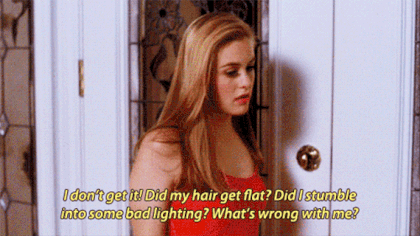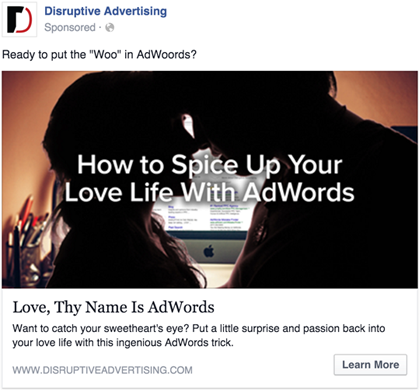Are You Paying for the Wrong Traffic?

Running an effective blog can be tricky. You put your heart and soul into your posts, hit “Publish” and hope that your article will strike a chord.
Sometimes it works and sometimes it doesn’t.
Often, some of your best work goes completely unnoticed. For these articles, paid promotion can be just the nudge your article needs to get the attention it deserves.
However, if you don’t do it right, paid promotion can be a complete waste of money.
Regardless of how you get traffic to your blog, if you’re blogging to make money, you can’t afford to send the wrong kind of traffic to your website.
You need people to come to your blog, read your content and then do what you want them to do (sign up for your newsletter, click on an ad, buy a product, hit you up for freelance work, etc).
In other words, you need them to convert.
Related: 4 Free WordPress Plugins for Improving Your Blog’s Conversion Rate
Unfortunately, a lot of people come to your website and leave without converting. It’s frustrating. After a while, most of us assume there must be something wrong with our posts that keep our readers from converting.
And so, like a love-starved teenage girl, we start changing things. Shoes…hair…content…call to action…but we never stop to ask the most important question:
Is this even the right guy…er, traffic?
The problem is, even a perfect post won’t convert very well if you’re sending it the wrong traffic.
Are You in Front of the Right Audience?
Often, you think you’re targeting one audience when you are actually targeting a very different audience.
Organic Traffic
For example, I run a digital marketing agency. Blogging is a big part of how we drive business to our website and in October 2013, we put out a blog post titled “6 Killer PPC Branding Tactics Even Freddy Krueger Loves!”
We published the article and—almost overnight—our blog traffic skyrocketed!
In fact, for more than a year, that blog post drove more organic traffic to our site than any other page on our site (including our homepage).
For a while, it was high-fives all around…until we started looking at our conversion data.
Despite getting hundreds of clicks per day, this post didn’t produce a single conversion.
Not.
One.
Single.
Conversion.
In fact, the post has now been live for 2.5 years and we have yet to see a person click on this post and convert.
Why not?
The post is clearly about PPC advertising. It was in the coveted #1 position on Google. It should have been driving traffic that would be interested in our PPC management services, read the article and convert.
What was the problem?
As it turned out, the post was showing up as the first result on Google…but not when people searched for “ppc”, “ppc branding” or even “ppc branding tactics.”
It was showing up when people typed in “freddy krueger”.
Now, I don’t know why someone would type in “freddy krueger” and click on a link to a post about PPC advertising, but I’m not surprised that they didn’t convert.
Because we were showing up for the wrong keyword, our audience was wrong (and possibly homicidal…).
Paid Traffic
You often run into the same problem with paid traffic, too.
For example, a few months back, I promoted a blog post on Facebook entitled “How to Spice Up Your Love Life With Google AdWords”.
It was a very witty, tongue-in-cheek exploration of the parallels between marketing and romancing—one that I expected to do very well with my target audience.
Since I wanted the post to get a lot of eyeballs, I decided to promote it on Facebook.
Having promoted a variety of posts on Facebook, I had identified what I thought was the right audience. The audience clicked and converted at a fairly reliable rate and I thought this article would really grab their interest.
It did.
I got a ton of clicks, but my conversion rate dropped. Hard.
At first, I was confused. Clearly, my audience was connecting with the blog post, because they were clicking in droves. So why weren’t they converting in droves?
To try and figure out what was going on, I started looking at the demographics of who was clicking on my post.
As it turned out, most of my extra clicks were coming from 55+ year old women.
As a digital marketing agency, we don’t usually get a lot of traffic (let alone conversions) from the 55+ crowd. Since most Baby Boomers aren’t really interested in online advertising services, they hadn’t been clicking on my previous ads.
However, the whole “Spice Up Your Love Life” angle seemed to be striking a chord with the postmenopausal members of my audience.
The problem was, they were interested in spicing up their love life—not in working with a marketing agency.
Once I discovered this problem, I excluded the 55+ age group from my targeting. As a result, my clickthrough rate dropped, but my conversion rate went back to normal.
More importantly, I was no longer paying for the wrong traffic.
Targeting the Right Traffic
Whether you are paying for traffic or not, it’s important to make sure you blogging efforts are driving traffic that will convert.
The question is, how do you ensure that your posts are targeting the right traffic? Here are 3 things to think through before publishing your next blog post:
- Which posts lead to conversions? If you understand which content attracts the right audience, you can focus your blogging efforts on generating more of that kind of content.
- Where does your high-converting traffic come from? If most of your conversions come from a certain set of organic keywords, write more posts on those sorts of topics. If paid promotion drives most of your conversions, figure out which demographics convert the best and target your posts to that segment of your audience.
- Which demographics convert the best? To see this, you need to get into your analytics data. If a certain demographic converts better, they may be an ideal group to target with further posts or paid promotion efforts.
If you want your blogging efforts to pay off, your posts need to appeal to an audience that will do more than just read what you write. With a little extra research and forethought, you can create content that will get both clicks and conversions.
Conclusion
Regardless of what their blogging objectives are, successful bloggers know how to write for the right traffic. If your traffic isn’t converting, you’re probably targeting the wrong audience.
You’ve heard my two cents, now it’s your turn.
How have you seen the wrong traffic undermine your blogging efforts? Have you ever had a blog post that drove a lot of the wrong traffic?
This post was written by Jacob, a passionate entrepreneur on a mission to help businesses achieve online marketing success. As the Founder & CEO of Disruptive Advertising, Jacob has created an award-winning, world-class organization that has helped over 2,000 businesses grow using pay-per-click advertising and website optimization.





